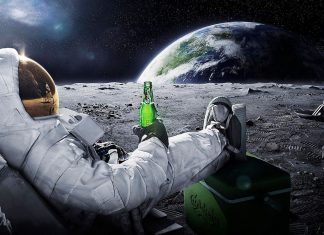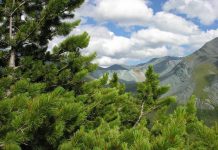Our home is not a country or even a planet, but the entire Solar System, infinitely interesting and immense. We still know very little about planets and other celestial bodies, but science keeps evolving, and first manned ships will go to the distant gas giants soon. But now we can only be content with a grain of knowledge…
Top amazing facts about Solar System
1.Apparently our Solar System was formed from “recyclable materials” obtained from pre-existing and then exploded stars.
2.It was formed about 4.57 billion years ago.
3.About 99.86% of its total mass falls on the Sun itself.
4.As the Earth revolves around the Sun, so the Solar System revolves around the center of the Galaxy moving at 150 miles per second (about 240 kilometers per second) speed.
5.All the planets of the Solar System could be placed between the Earth and the Moon.
6.Saturn isn’t the only one planet with rings, other gas giants have them too. But Saturn’s ring system are really larger.
7.Of all the planets in the Solar System, Uranus and Neptune are the least researched, and Mars is the most researched one.
8.The hottest planet is Venus. It is farther from the Sun than Mercury, but because of the incredibly dense atmosphere, which becomes almost liquid near the surface due to the monstrous pressure, the temperature near its surface exceeds 860 °F (about 460 °C). This is higher than the melting point of lead. And there are rains of sulfuric acid, but because of the heat they do not reach the surface, evaporating in the atmosphere.
9.Europa, one of Jupiter’s moons, has more water than Earth.
10. Polar lights occur are not on the Earth only, but also on some other planets of the Solar System.
11. The highest peak in the Solar System relative to the local analogue of “sea level” is Olympus located on Mars — 69.500 feet (21.2 kilometers). For comparison, Everest, the highest peak of the Earth, doesn’t reach a height of 30.000 feet, or 9 kilometers (check 15 amazing facts about mountains).
12. A day on Mars lasts almost as long as it does on Earth — only 37 minutes longer.
13. Among all the other planets in the Solar System, Mars is the most similar to Earth, but it is cold and almost devoid of atmosphere. However, the temperature at its equator rises above the freezing point of water on hot summer days. Sometimes.
14. Only three celestial bodies in the Solar System except of gas giants have a dense atmosphere — Earth, Venus and Saturn’s moon Titan.
15. Mercury’s core occupies a larger percentage of the total planet volume than any other planet’s core do. Scientists believe that the once monstrous collision literally ripped off his planetary crust.
16. Mariner Valley, the most gigantic canyon complex in the Solar system, is located on Mars. It’s much more huge than Grand Canyon.
17. The unique 10199 Chariklo asteroid has a ring system like a gas giant.
18. The largest moon in the Solar System is Ganymede, one of Jupiter’s satellites.
19. Launched in 1977, Voyager-1 was the first spacecraft to leave the Solar System.
20. Pluto hasn’t made a complete revolution around the Sun since its discovery until it was stripped of its planet status. It’s considered a dwarf planet now.
21. Many scientists believe that another planet, probably a gas giant, exist somewhere in the Kuiper belt, beyond Pluto and other minor planets. This is indicated by a number of indirect signs.
22. The Oort cloud surrounding the Solar System is estimated to contain 2-3 trillion comets with a nucleus more than 0.7 mile (1 km) in diameter.
23. Jupiter protects Earth from asteroids and meteorites. Its powerful gravity attracts them, and they burn in its atmosphere without reaching our planet.
24. The official wind speed record fixed on Earth once was 253 mph (408 kmph). But on Neptune, the wind blows at a speed of 1250-1350 mph (2000-2200 kmph).
25. The size of Venus is almost identical to the size of the Earth, as is its mass and the gravity on its surface. However, there are no other similarities between these planets.
26. Once upon a time there was water on Venus, but it got evaporated because of the monstrous heat, and the solar wind had blew the water steam away from upper atmosphere layers.
27. The radiation emitted by the Sun is deadly, and we are protected from it by the atmosphere and the magnetic field of the Earth only.
28. The largest artificial space object in the Solar System is ISS (International Space Station).That’s the most expensive object ever built.
29. The coldest planet in the Solar System is Uranus. The temperature of its atmosphere is about -371 °F ( -224 °C).
30. There are rivers, seas and lakes on Saturn’s moon Titan. They were photographed by the Cassini probe during the landing on Titan. They don’t contain water though, but liquid methane and ethane.
31. Of all the planets in the Solar System, only Venus rotates clockwise. All the other counter — clockwise, except for Uranus. Because of the 90-degree angle of the axis, Uranus rotates as if lying on its side.
32. The largest model of the Solar system (1 to 20 million scale) is built in Sweden. It is scattered over a space with a diameter of 590 miles (950 kilometers).
33. Volcanoes exist on Earth and Venus, but the most geologically active celestial body in the Solar system is Io, Jupiter’s moon. Its surface is literally dotted with volcanoes, and it is constantly flooded with lava flows (check 23 amazing facts about volcanoes).
34. Storms and hurricanes are raging not on Earth only, but also on other planets of the Solar System. On Mars, dust storms last 3-4 months sometimes, and there’s a monstrous atmospheric vortex on Jupiter, a Great Red Spot, a hurricane the size of the Earth. It exists for centuries.
35. There are giant clouds of a hexagonal shape at Saturn’s poles. The sides of the hexagon are about 9000 miles (14,500 kilometers) long, which is more than the diameter of Earth.


































